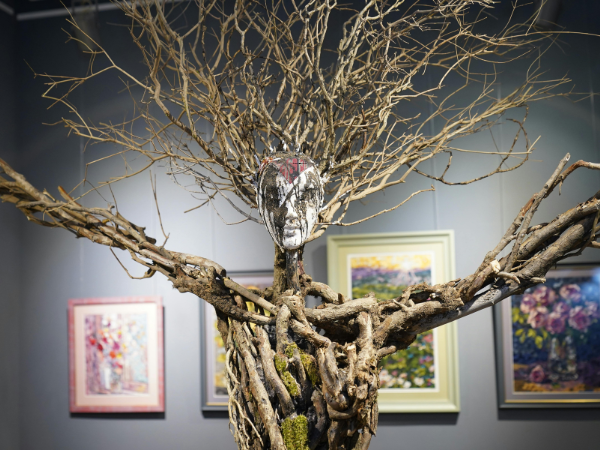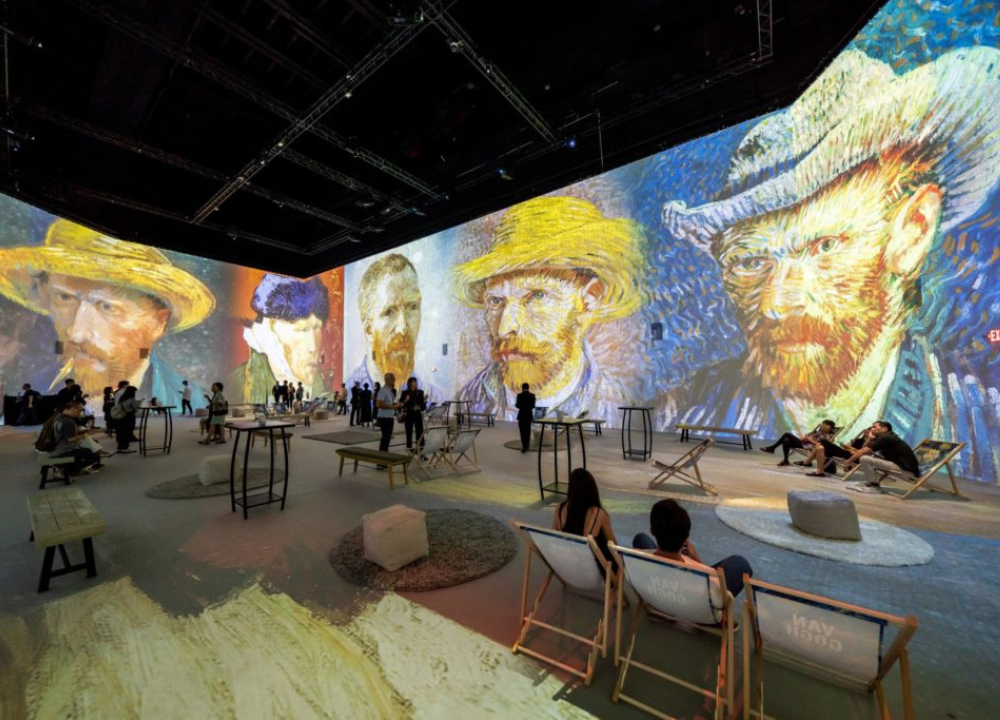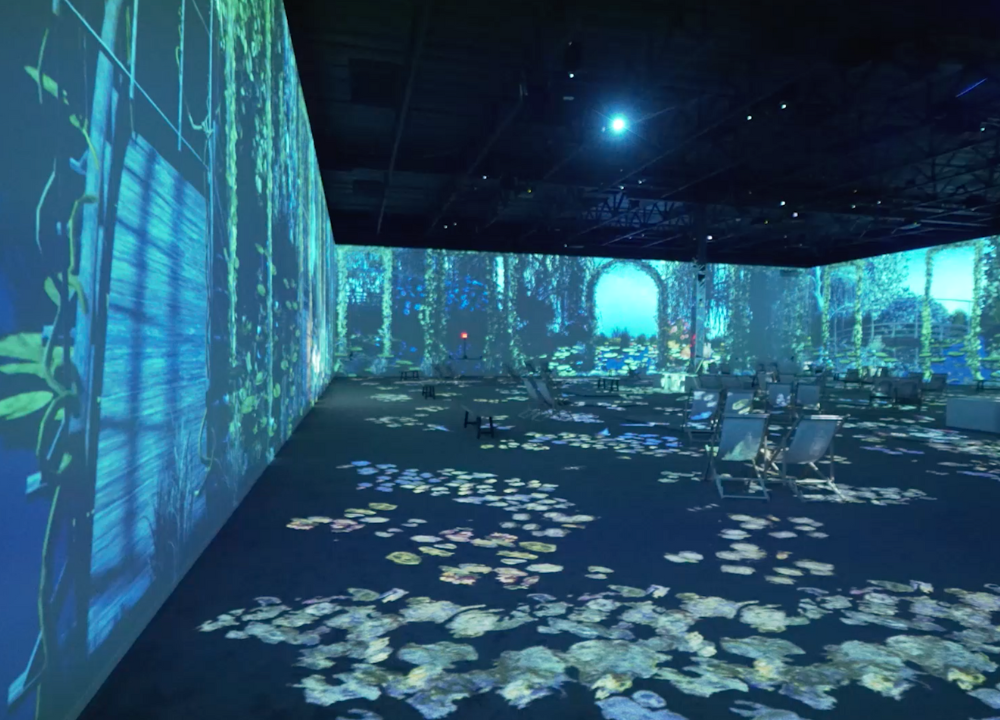Hidden art gems often offer unforgettable experiences that go beyond the usual crowd and noise. This article will reveal underrated art exhibitions you probably haven’t heard of but definitely should.
Lesser-known Art Venues
Exploring art beyond famous museums opens doors to unique and inspiring experiences. Lesser-known art venues often showcase fresh talent and innovative ideas. These places create a personal connection between the visitor and the artwork.
Small Galleries With Big Impact
Small galleries may have limited space, but their influence is powerful. These galleries often focus on emerging artists and experimental art forms. They provide a platform for voices that are not yet mainstream. Visitors can enjoy a quiet, intimate setting where every detail matters.
- Personalized experience: Gallery staff often share stories about artists and their works.
- Diverse art styles: From abstract paintings to modern sculptures, variety is a key feature.
- Affordable art: Prices are usually lower, making art collection accessible.
Here is a quick comparison of what small galleries offer versus larger institutions:
| Aspect | Small Galleries | Large Institutions |
|---|---|---|
| Artist focus | Emerging & local artists | Established, famous artists |
| Visit experience | Intimate and personal | Structured and formal |
| Event frequency | Frequent small exhibitions | Major seasonal exhibitions |
| Art styles | Experimental and varied | Classic and curated |
Exploring small galleries offers fresh perspectives and a chance to connect deeply with art. These spaces are vital for nurturing creativity and new ideas.
Community Art Spaces Worth Visiting
Community art spaces serve as creative hubs for local people. They focus on collaboration and participation, often welcoming all ages and skill levels. These spaces offer workshops, group projects, and public exhibitions. They encourage visitors to engage actively with art instead of just observing it.
Key features of community art spaces:
- Inclusive environment: Open to everyone regardless of background.
- Workshops and classes: Learn new skills or improve existing ones.
- Events and festivals: Celebrate local culture and creativity.
- Support for local artists: Opportunities to showcase their work.
Here is a sample list of activities commonly found in community art spaces:
- Group mural painting
- Pottery and ceramics workshops
- Photography exhibitions
- Art talks and lectures
- Children’s art programs
Community art spaces enrich neighborhoods and bring people together. Visiting these venues offers a chance to explore creativity in a welcoming setting. They also help build stronger local connections through shared artistic experiences.
Emerging Artists To Watch
Discovering emerging artists is like finding fresh voices in the art world. These creators bring new energy and ideas to galleries. Their work often challenges traditional forms and explores bold themes. Many of these artists remain under the radar but show great promise.
Innovative Styles And Mediums
Emerging artists use styles and mediums that break from the usual. They experiment with materials and techniques to express their vision. This innovation often leads to striking, memorable pieces. Some focus on blending digital art with physical forms. Others use recycled materials or mixed media to create texture and depth.
- Mixed media: Combining paint, fabric, and found objects.
- Digital art: Using software and projection in installations.
- Sculpture with recycled materials: Giving new life to discarded items.
- Interactive art: Engaging viewers through touch or movement.
These methods reflect a desire to connect with audiences in new ways. The artists’ work often addresses current social or environmental themes. The table below summarizes popular innovative mediums among emerging artists:
| Medium | Example | Purpose |
|---|---|---|
| Augmented Reality | Overlaying digital images on real-world views | Enhance storytelling |
| Eco-Art | Using natural or recycled materials | Raise environmental awareness |
| Video Installations | Short films or loops displayed in galleries | Create immersive experiences |
| Textile Art | Fabric manipulation and embroidery | Express cultural identity |
Upcoming Exhibitions Featuring New Talent
Several exhibitions showcase fresh talent and offer a platform for emerging artists. These events often take place in smaller galleries or art centers. They provide visitors a chance to see unique art before it gains wider recognition.
Here is a list of noteworthy upcoming exhibitions:
- Fresh Perspectives – Features young painters and mixed media artists.
- New Voices – Focuses on interactive and digital art pieces.
- Eco Visions – Highlights eco-conscious art using recycled materials.
- Urban Canvas – Showcases street art and murals from emerging creators.
Attending these shows offers insight into new trends and talents. Galleries hosting these exhibitions often provide artist talks and workshops. This helps visitors understand the artwork’s meaning and context. Supporting these events helps artists build their careers and reach wider audiences.
Unique Thematic Exhibitions
Exploring unique thematic exhibitions offers a fresh way to enjoy art beyond traditional galleries. These exhibitions focus on unusual ideas or stories, creating immersive experiences. They challenge visitors to think deeply and see art from new angles.
Unconventional Art Themes
Unconventional art themes break away from common subjects like landscapes or portraits. They explore unusual topics, sparking curiosity and new perspectives. These exhibitions often mix different art forms, such as painting, sculpture, and digital media.
Examples of unconventional themes include:
- Art inspired by science fiction and fantasy worlds
- Works focusing on everyday objects seen in a new light
- Exploration of dreams and subconscious thoughts
- Art created using recycled or unexpected materials
These themes invite visitors to ask questions and engage emotionally. They encourage thinking beyond norms and embracing creativity.
| Theme | Description | Example Artworks |
|---|---|---|
| Dreamscapes | Visual interpretations of dreams and surreal thoughts | Surreal paintings, abstract sculptures |
| Recycled Art | Art made from reused materials to highlight sustainability | Installations from plastic waste, metal scrap sculptures |
| Microcosms | Focus on tiny worlds like insects or cells | Close-up photography, detailed drawings |
Unconventional art themes make exhibitions memorable. They attract visitors who want more than just pretty pictures.
Cross-cultural Art Displays
Cross-cultural art displays celebrate diversity by combining different traditions and styles. These exhibitions show how cultures influence each other through art. They promote understanding and respect for global heritage.
Visitors see artworks that mix colors, patterns, and techniques from various regions. This blend creates vibrant and rich visual stories. Many exhibitions also include performances, crafts, and interactive elements.
Benefits of cross-cultural exhibitions:
- Expand knowledge of world cultures
- Highlight shared human experiences
- Encourage dialogue between communities
- Preserve endangered art forms
Examples of cross-cultural themes:
- Fusion of African and European art styles
- Asian influences in contemporary Western art
- Indigenous art combined with modern techniques
| Exhibition | Featured Cultures | Focus |
|---|---|---|
| Bridges of Art | Latin America & Africa | Shared traditions in textile and painting |
| East Meets West | Asia & Europe | Mixed media and calligraphy fusion |
| Native Voices | Indigenous & Contemporary | Storytelling through sculpture and digital art |
Cross-cultural art displays open eyes and minds. They offer a powerful way to experience art beyond borders.
Interactive And Immersive Shows
Hidden art exhibitions often offer unique experiences that go beyond just looking at paintings. Interactive and immersive shows invite visitors to step inside the artwork. These exhibitions break the usual museum rules and allow people to touch, move, and even become part of the art.
Art You Can Experience
Interactive art exhibitions let visitors engage with the art directly. Instead of just observing, people can participate in creating or changing the artwork. This type of show makes art feel alive and personal. Many exhibitions use:
- Touch-sensitive installations
- Sound and light effects
- Physical movement to alter the art
For example, some exhibitions invite visitors to paint on large digital canvases or walk through rooms filled with changing colors and shapes. This creates a sense of discovery and surprise. People remember these experiences longer because they actively take part.
| Type of Interaction | Example | Visitor Experience |
|---|---|---|
| Touch | Interactive murals | Change colors or patterns by touch |
| Movement | Room-sized light shows | Walk through and affect light patterns |
| Sound | Musical installations | Create music by moving or touching objects |
These shows appeal to all ages and often invite families to explore together. They make art accessible and fun.
Tech-driven Exhibitions
Technology transforms many hidden art exhibitions into new experiences. These shows use digital tools to create art that moves, changes, or reacts to visitors. Some use:
- Augmented Reality (AR) to add layers to physical art
- Virtual Reality (VR) to place visitors inside a digital world
- Projection mapping to animate walls and floors
Visitors wear headsets or use smartphones to interact with the exhibition. This technology blurs the line between the real and digital worlds. It offers new ways to explore art beyond traditional methods.
Many tech-driven exhibitions focus on storytelling. They use sound, visuals, and interaction to guide visitors through a narrative. This makes the visit feel like a journey rather than just viewing objects.
| Technology | Purpose | Visitor Benefit |
|---|---|---|
| Augmented Reality | Add digital elements to real art | See hidden details and animations |
| Virtual Reality | Create fully digital art spaces | Explore immersive worlds |
| Projection Mapping | Project images on surfaces | Experience dynamic visuals |
These exhibitions often require booking in advance due to limited space. They offer a fresh way to enjoy art and inspire creativity.
Tips For Discovering Hidden Exhibitions
Discovering hidden art exhibitions can bring fresh inspiration and unique experiences. Many of these shows do not get big publicity but offer amazing creativity. Finding these gems requires some effort and smart strategies. Here are simple tips to help you spot underrated art events near you or in cities you visit.
Following Art Communities Online
Online art communities provide a wealth of information about lesser-known exhibitions. These groups often share updates about small galleries, pop-up shows, and emerging artists. Joining or following these spaces helps you stay informed without spending hours searching.
Ways to engage with art communities online:
- Join Facebook groups focused on local or niche art scenes.
- Follow Instagram accounts of indie galleries and art collectives.
- Subscribe to newsletters from art blogs and cultural websites.
- Participate in forums or Reddit threads about art events.
These online hubs often post event calendars, artist spotlights, and behind-the-scenes content. This helps you understand the vibe of a show before attending. The interactive nature allows you to ask questions and get recommendations directly from other art lovers.
| Platform | Type of Content | Best For |
|---|---|---|
| Photos, Stories, Event Announcements | Visual inspiration and quick updates | |
| Facebook Groups | Discussions, Event Invites, Local Tips | Community interaction and event planning |
| In-depth discussions, QA | Detailed advice and niche interests | |
| Email Newsletters | Curated event lists and features | Weekly or monthly highlights |
Exploring Offbeat Art Districts
Art districts away from city centers often host unexpected exhibitions. These neighborhoods attract independent artists and creative spaces that stay under the radar. Walking through these areas reveals unique galleries, studios, and street art.
Tips for exploring offbeat art districts:
- Research neighborhoods known for art but less touristy.
- Visit local cafes or shops that support community art.
- Check for small art fairs or weekend studio tours.
- Talk to gallery owners or artists for insider info.
- Look for flyers and posters in public spaces.
These districts often feature affordable art and fresh ideas. The atmosphere is casual and welcoming. You may discover an artist before they become famous or see styles you won’t find elsewhere.




